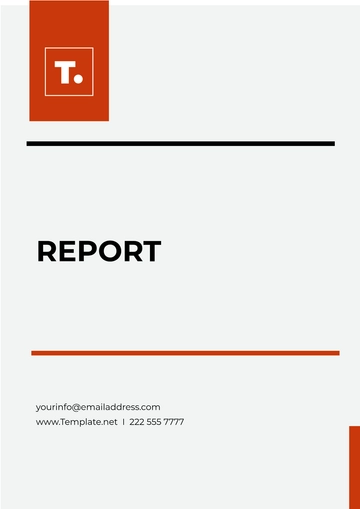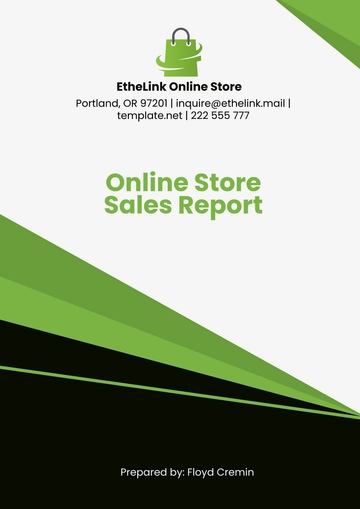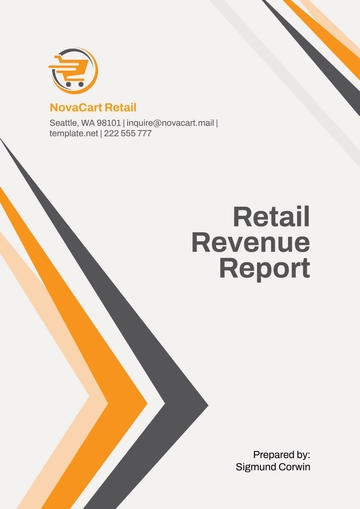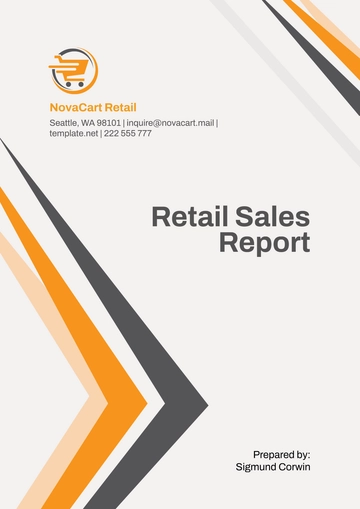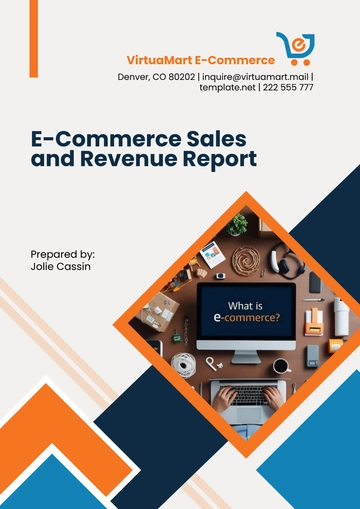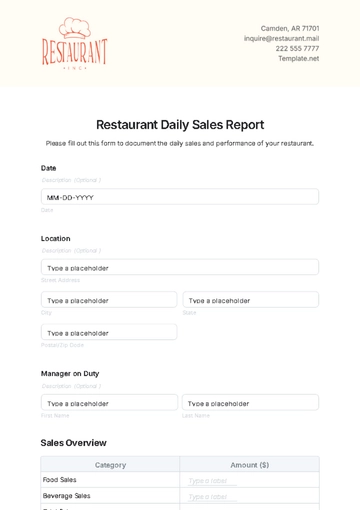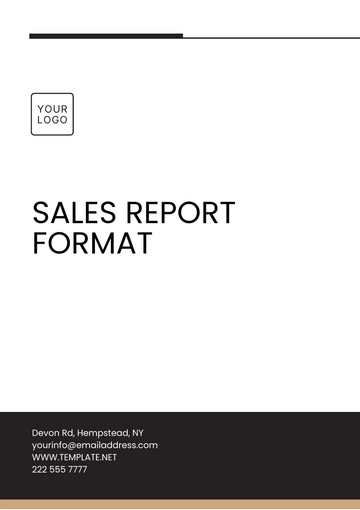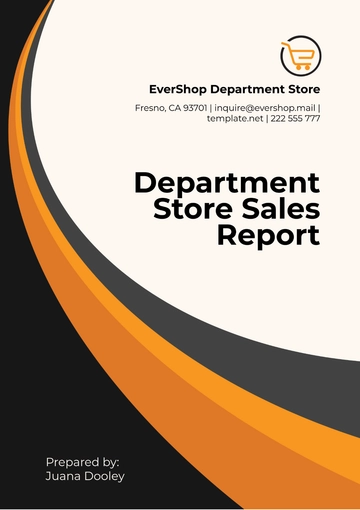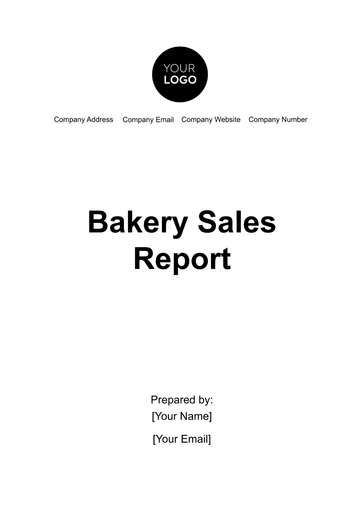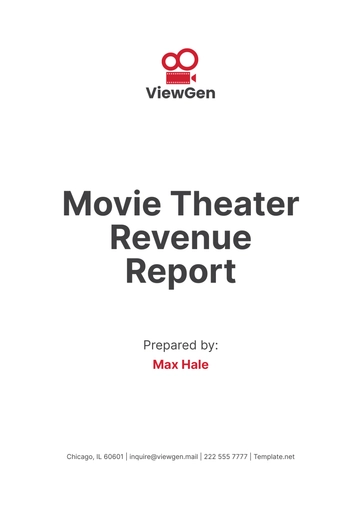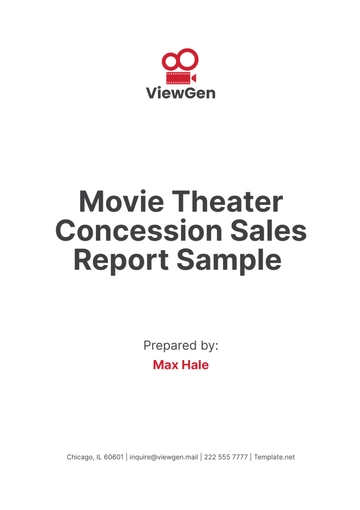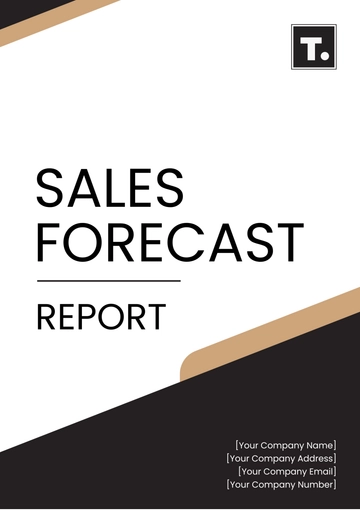Free Retail Revenue Report
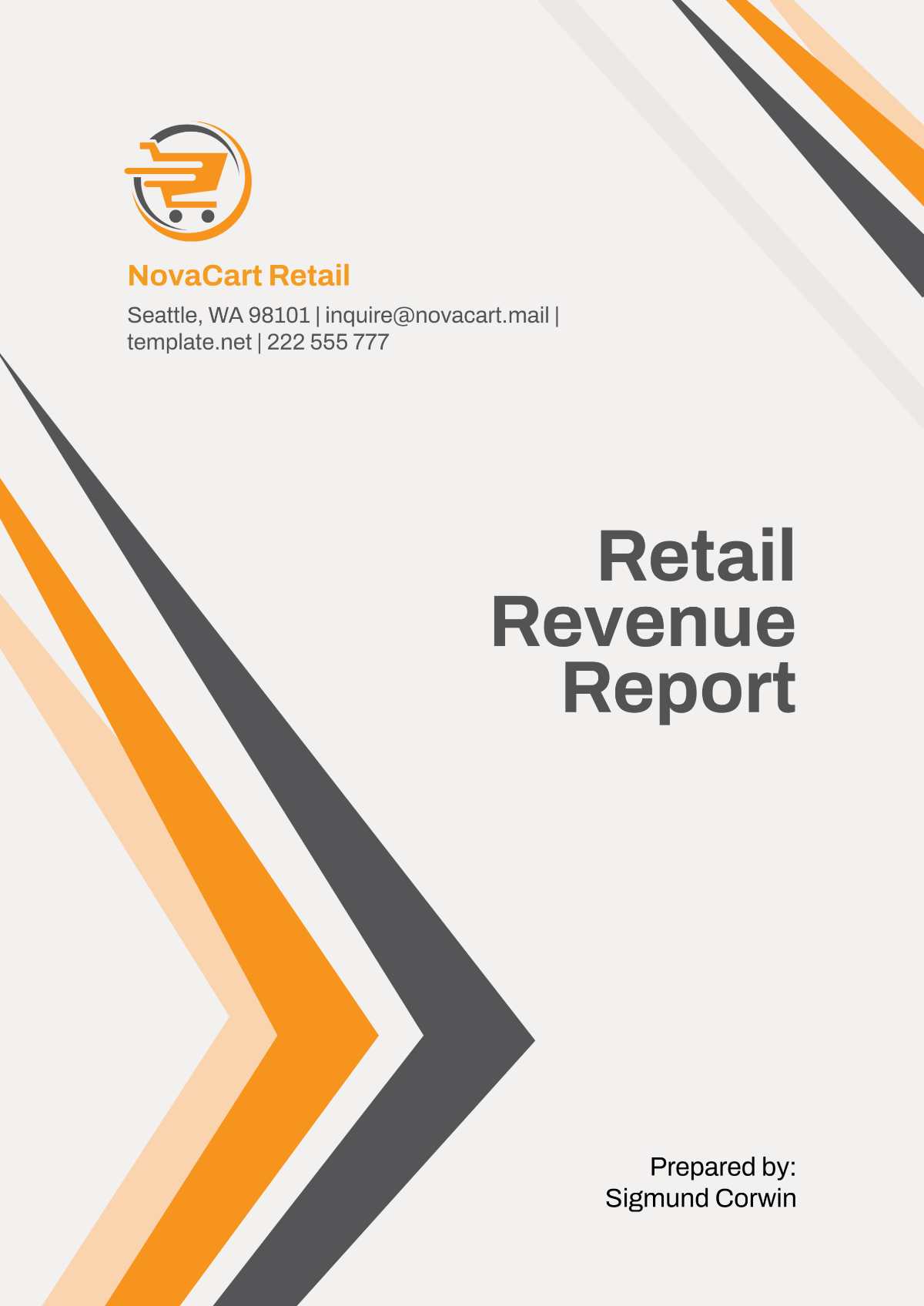
I. Executive Summary
The Retail Revenue Report for [Your Company Name] provides an exhaustive analysis of the company's performance in 2050, offering insights into financial growth, market trends, and key performance indicators. This report serves to inform internal and external stakeholders of the company's standing and strategic direction. The year 2050 proved to be a successful year for [Your Company Name], as it experienced significant growth, achieving a total revenue of $[4,750,000,000], marking an [8.5%] increase compared to 2049. This growth was not only the result of increased sales but also a product of strategic investments in technology, customer retention, and expanded market reach.
Key drivers of this revenue growth included the successful ramp-up of e-commerce platforms, which grew by [12%] compared to the previous year. Additionally, customer loyalty programs, which were restructured in 2049, began to yield returns in 2050, contributing an estimated $[600,000,000] in repeat sales. Regional market expansion efforts were also fruitful, with new markets in Asia-Pacific, Latin America, and Europe helping boost the company's bottom line.
Looking ahead, [Your Company Name] plans to maintain its momentum by leveraging emerging trends such as sustainability, advanced e-commerce technologies, and a more personalized customer experience. With ambitious goals set for 2051, this report also outlines the key areas for future growth, strategic investments, and operational improvements.
II. Revenue Overview
A. Total Revenue
[Your Company Name]'s total revenue for the year 2050 was $[4,750,000,000], which marked an impressive increase of $[375,000,000] compared to the previous year’s revenue of $[4,375,000,000]. This [8.5%] growth was driven by several key factors. One of the largest contributors was the expansion of online sales channels, which have become a cornerstone of the retail industry. The e-commerce platform, which accounted for nearly [52.6%] of total revenue, saw significant growth thanks to improvements in user experience, faster delivery options, and a wider variety of products offered.
Another important factor contributing to this growth was the increased focus on customer retention. [Your Company Name] introduced new loyalty programs last year, which began yielding positive results in 2051. This initiative helped improve customer lifetime value and encouraged repeat business, bringing in an additional $[600,000,000] in sales. Furthermore, the company expanded into new regions, especially in Southeast Asia, Eastern Europe, and South America, which resulted in an additional $[225,000,000] in revenue.
Table 1: Yearly Revenue Performance (2050 vs. 2049)
Year | Total Revenue | Year-over-Year Growth |
|---|---|---|
2050 | $4,375,000,000 | 7.3% |
2051 | $4,750,000,000 | 8.5% |
B. Revenue Breakdown by Channel
The revenue generated by [Your Company Name] in 2050 was largely attributed to three core sales channels: e-commerce, brick-and-mortar stores, and wholesale/partnerships.
E-commerce: As mentioned earlier, e-commerce sales were a significant revenue driver, contributing $[2,500,000,000], which accounted for [52.6%] of the total revenue. The growth of online shopping, especially post-pandemic, has created an environment where customers increasingly prefer to make their purchases digitally. The launch of new digital features, including personalized product recommendations, augmented reality shopping experiences, and faster checkout options, played a role in improving conversion rates.
Brick-and-Mortar Stores: Traditional physical retail still represented a substantial portion of total sales, contributing $[1,875,000,000], which is [39.5%] of total revenue. Despite the increasing dominance of online retail, physical stores continue to perform well, especially in high-traffic areas.
Wholesale and Partnerships: The wholesale and partnerships division brought in $[375,000,000], which accounted for [7.9%] of total revenue. Strategic collaborations with global retailers helped the company reach new customer segments.
Revenue by Channel:
Channel | Revenue | Percentage of Total |
|---|---|---|
E-commerce | $2,500,000,000 | 52.6% |
Brick-and-Mortar Stores | $1,875,000,000 | 39.5% |
Wholesale | $375,000,000 | 7.9% |
III. Regional Revenue Performance
A. Revenue by Region
[Your Company Name] operates in multiple regions across the globe, with performance varying according to local market conditions, customer preferences, and economic factors. The following is a detailed breakdown of the revenue generated from different regions:
North America: The North American market continued to be the largest revenue contributor, generating $[2,375,000,000], which made up [50%] of total revenue. The company saw strong sales performance, driven by continued demand for apparel, electronics, and home goods, with major markets such as the U.S. and Canada accounting for the majority of this figure.
Europe: Europe showed impressive growth, with total revenue of $[1,050,000,000], accounting for [22.1%] of the total revenue. Countries like the UK, France, and Germany experienced higher-than-expected demand for sustainable products, which played a significant role in the region's performance.
Asia-Pacific: The Asia-Pacific region contributed $[875,000,000] to the total revenue, representing [18.4%]. This region showed solid performance, especially in the consumer electronics and apparel sectors.
Latin America: Latin America contributed $[300,000,000] in revenue, accounting for [6.3%]. This region showed slower growth but was considered a key area for future expansion.
Middle East and Africa: The Middle East and Africa generated $[150,000,000], or [3.2%] of the total revenue, marking a slight increase compared to the previous year.
Regional Revenue Performance
Region | Revenue | Percentage of Total Revenue |
|---|---|---|
North America | $2,375,000,000 | 50% |
Europe | $1,050,000,000 | 22.1% |
Asia-Pacific | $875,000,000 | 18.4% |
Latin America | $300,000,000 | 6.3% |
Middle East and Africa | $150,000,000 | 3.2% |
B. Regional Growth Insights
North America experienced moderate growth at [6%], fueled by advancements in mobile shopping apps and the continued popularity of home delivery services.
Europe was the standout performer in 2050, with a remarkable growth rate of [12%]. The European market’s growth was driven by a renewed focus on sustainability, leading to higher demand for eco-friendly products.
Asia-Pacific performed well, registering [9%] growth, especially in high-demand categories like smart electronics, wearables, and fashion.
Latin America had slower growth, achieving just [4%] growth, but the region has great potential for expansion, particularly in countries like Brazil, Mexico, and Argentina.
Middle East and Africa performed slightly below expectations, but the region showed signs of growth due to increasing demand for luxury goods and e-commerce expansion.
IV. Product Category Performance
A. Top Performing Product Categories
Product categories were another critical factor in [Your Company Name]'s growth in 2050. The following categories contributed significantly to total revenue:
Apparel and Accessories: With $[1,425,000,000] in revenue, this category was the top performer, accounting for [30%] of total revenue. This segment saw strong growth driven by seasonal collections and a growing demand for fashion sustainability.
Consumer Electronics: Revenue from electronics amounted to $[1,000,000,000], making up [21%] of total revenue. This was mainly driven by new product releases in wearable technology, smart home devices, and mobile phones.
Home and Kitchen: The home and kitchen category brought in $[950,000,000], accounting for [20%] of total revenue. The increasing trend towards home improvement and cooking during the year helped fuel this growth.
Health and Beauty: Health and beauty products contributed $[850,000,000], which made up [18%] of total revenue. New product lines focusing on health-conscious consumers led to an increase in sales.
Others: Other products, including toys and sports equipment, brought in $[525,000,000], or [11%] of total revenue.
Product Category Revenue Breakdown
Product Category | Revenue | Percentage of Total Revenue |
|---|---|---|
Apparel and Accessories | $1,425,000,000 | 30% |
Consumer Electronics | $1,000,000,000 | 21% |
Home and Kitchen | $950,000,000 | 20% |
Health and Beauty | $850,000,000 | 18% |
Others | $525,000,000 | 11% |
B. Emerging Product Trends
Several emerging trends influenced the retail landscape in 2050. Key trends included:
Sustainability: The demand for sustainable products continued to rise, with eco-friendly items representing approximately [12%] of total revenue. This trend is expected to continue, with consumers increasingly prioritizing environmentally conscious products.
Luxury Goods: The luxury segment saw a significant uptick in demand, with high-end products contributing $[475,000,000] to total revenue, a growth rate of [15%] year-over-year.
Health and Wellness: With increasing interest in personal well-being, health-related products such as supplements, fitness equipment, and skincare products saw growth, with the segment generating $[250,000,000].
V. Customer Metrics
V.A. Customer Retention and Acquisition
Customer retention and acquisition strategies were key drivers of revenue for [Your Company Name] in 2051.
Customer Retention Rate: The company improved its customer retention rate to [82%] in 2050, up from [78%] in 2050. This was largely attributed to improvements in loyalty programs, personalized marketing efforts, and customer service.
New Customers Acquired: [Your Company Name] successfully acquired approximately [4,000,000] new customers in 2051, contributing an estimated $[1,000,000,000] in additional revenue. This increase was supported by targeted marketing campaigns, an improved product assortment, and a better online shopping experience.
B. Average Order Value (AOV)
The average order value (AOV) saw an increase to $[125] from $[115] in 2050, reflecting an increase in the number of higher-ticket purchases. Factors contributing to this increase include:
Product Bundling: The company introduced several bundling strategies, which encouraged customers to purchase multiple items at once, thus increasing the average order size.
Premium Offerings: There was also an uptick in demand for high-value products such as electronics and luxury goods, which naturally led to higher AOV.
VI. Key Challenges
A. Supply Chain Disruptions
In 2051, [Your Company Name] faced several supply chain disruptions, primarily due to global shipping delays and manufacturing challenges. These disruptions had a direct impact on revenue, causing an estimated loss of $[237,500,000], or [5%] of total revenue. To address these challenges, the company invested heavily in supply chain optimization, including artificial intelligence-driven logistics platforms, which should help mitigate such issues in the future.
B. Inflation and Pricing Pressures
Inflationary pressures were another major challenge. The increase in production costs led to a [2%] price hike across all product categories. While this helped offset the rising costs of materials, customer feedback indicated [15%] dissatisfaction with the price increases. In response, [Your Company Name] began refining its pricing strategies and introducing value-added services to maintain customer loyalty while managing operational costs.
VII. Future Strategies for Growth
A. Expansion Plans
The company has ambitious plans for the coming years, focusing on both regional and product-line expansion.
Regional Expansion:
[Your Company Name] plans to open [50] new stores in 2051, with a focus on the Asia-Pacific and European markets. These stores will be strategically located in high-growth areas to capture more market share.
The company is also committing $[100,000,000] to improve e-commerce platforms in Latin America, with the goal of increasing online sales by [25%] in the next year.
Product Innovation:
[Your Company Name] is committed to introducing [25] new sustainable product lines by mid-2051, aimed at satisfying the growing demand for eco-conscious consumer goods.
Additionally, a budget of $[50,000,000] has been allocated to research and development, particularly for wearable technologies, which are expected to be a major growth area.
B. Technology Enhancements
Significant investments are planned in AI-driven customer personalization systems, which will help improve conversion rates by providing personalized shopping experiences tailored to individual preferences.
Cybersecurity will also be a key focus for 2051, with the company allocating $[15,000,000] towards enhancing its data protection systems, ensuring customer privacy and data integrity remain top priorities.
VIII. Conclusion
[Your Company Name] had a successful year in 2050, showing strong revenue growth, a solid customer base, and effective regional expansions. The company has made key investments in technology, supply chain optimization, and product innovation, which have positioned it for continued growth. Looking ahead to 2051, [Your Company Name] is well-positioned to continue its trajectory, with goals set for $[5,200,000,000] in total revenue and ongoing commitments to customer satisfaction and operational efficiency.
The future holds promising opportunities, particularly in emerging markets and product innovations, and [Your Company Name] is fully committed to capitalizing on these opportunities while maintaining its leadership position in the global retail market.
- 100% Customizable, free editor
- Access 1 Million+ Templates, photo’s & graphics
- Download or share as a template
- Click and replace photos, graphics, text, backgrounds
- Resize, crop, AI write & more
- Access advanced editor
Track your retail revenue with the Retail Revenue Report Template from Template.net. Editable and customizable, this template allows you to generate detailed revenue reports, providing clear insights into your business performance. With the AI Editor Tool, you can easily modify the template to fit your business needs and goals.
You may also like
- Sales Report
- Daily Report
- Project Report
- Business Report
- Weekly Report
- Incident Report
- Annual Report
- Report Layout
- Report Design
- Progress Report
- Marketing Report
- Company Report
- Monthly Report
- Audit Report
- Status Report
- School Report
- Reports Hr
- Management Report
- Project Status Report
- Handover Report
- Health And Safety Report
- Restaurant Report
- Construction Report
- Research Report
- Evaluation Report
- Investigation Report
- Employee Report
- Advertising Report
- Weekly Status Report
- Project Management Report
- Finance Report
- Service Report
- Technical Report
- Meeting Report
- Quarterly Report
- Inspection Report
- Medical Report
- Test Report
- Summary Report
- Inventory Report
- Valuation Report
- Operations Report
- Payroll Report
- Training Report
- Job Report
- Case Report
- Performance Report
- Board Report
- Internal Audit Report
- Student Report
- Monthly Management Report
- Small Business Report
- Accident Report
- Call Center Report
- Activity Report
- IT and Software Report
- Internship Report
- Visit Report
- Product Report
- Book Report
- Property Report
- Recruitment Report
- University Report
- Event Report
- SEO Report
- Conference Report
- Narrative Report
- Nursing Home Report
- Preschool Report
- Call Report
- Customer Report
- Employee Incident Report
- Accomplishment Report
- Social Media Report
- Work From Home Report
- Security Report
- Damage Report
- Quality Report
- Internal Report
- Nurse Report
- Real Estate Report
- Hotel Report
- Equipment Report
- Credit Report
- Field Report
- Non Profit Report
- Maintenance Report
- News Report
- Survey Report
- Executive Report
- Law Firm Report
- Advertising Agency Report
- Interior Design Report
- Travel Agency Report
- Stock Report
- Salon Report
- Bug Report
- Workplace Report
- Action Report
- Investor Report
- Cleaning Services Report
- Consulting Report
- Freelancer Report
- Site Visit Report
- Trip Report
- Classroom Observation Report
- Vehicle Report
- Final Report
- Software Report
